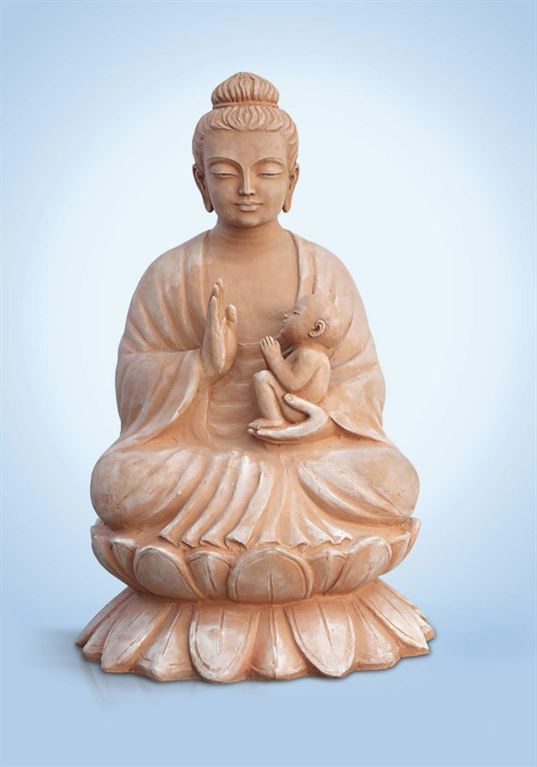Buddha and Child. 2010
Author: Alexey Leonov
Material: Терракота
Location: Private collection
Size: 52 х 33,5 х 28
Shakyamuni Buddha (6th and 4th centuries BC) is a spiritual teacher, the legendary founder of Buddhism. Buddha is not a name, but a definition of the state of consciousness of a sage who has reached the highest point of development. Literally translated, it means the one who “knows”, “enlightened”, i.e. has mastered perfect knowledge and wisdom.
Buddha’s teaching – dharma – is the way to liberation from a series of reincarnations of the soul. The key to this is understanding the essence of suffering, its causes, and learning ways to end it. Briefly, the essence of Buddhism is laid out in the Four Noble Truths, which the Buddha realized, and they represent a logical chain of cause and effect. The first two truths define suffering and the causes that led to it – desire and attachment. By getting rid of desires, it is possible to get rid of misery, which will open the way to release from the need to be born in the material world.
Buddhism occupies a special place in the spiritual development of humanity. Buddhism, at its core, is not a mystical tradition, but a special philosophical concept, a planned system of spiritual self-improvement. Gautama experienced this path on himself. The Great Teacher said that a life without misery is possible if you give up your preferences, apply a system of practices through moral self-discipline, contemplation, reflection and effective compassion.
The teachings of Buddhism are characterized by scientific accuracy and consistency. Understanding the Truth requires personal conscious efforts and constant work on self-improvement. Blind faith only holds back the development.
Buddha said: “There is no greater happiness than peace.” “Any excessive attraction to everything earthly is suffering.” “Who we are today is the result of our thoughts yesterday.”




